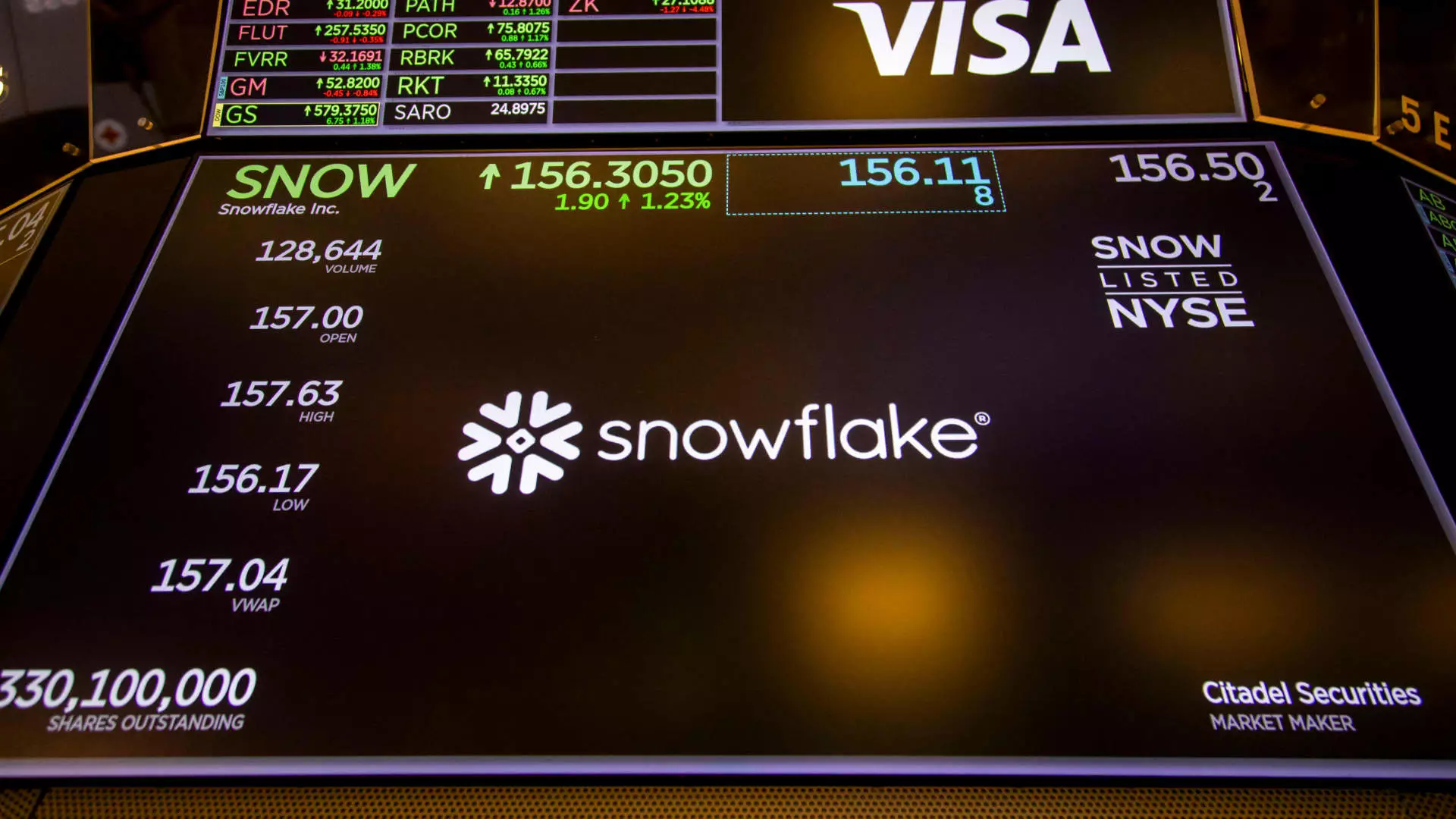In an eye-catching leap that has generated both intrigue and skepticism, Snowflake’s stock surged by 12% recently, hitting heights last seen over a year ago. This exhilarating rally followed the company’s announcement of its fiscal first-quarter results for 2026, which showcased a staggering 26% revenue growth to $1.04 billion, eclipsing analysts’ projections. This accomplishment marks a pivotal moment for Snowflake, as it becomes the first time since going public in 2020 that they achieved quarterly sales exceeding the $1 billion mark. Such numbers are undoubtedly impressive and paint an optimistic picture of a company poised for further success.
Yet, while the revenue figures paint one narrative, the underlying financial health of Snowflake reveals a different story. The tech giant reported a net loss of $430 million, widening from a loss of $317 million a year earlier. This contradiction prompts critical reflection—what are investors truly betting on? A powerful top line or an unsustainable growth strategy? The coalescence of positive revenue growth paired with significant net losses may elicit more concern than confidence as the market wrestles with expectations versus reality.
A.I.: The Double-Edged Sword
Central to Snowflake’s recent success is the company’s substantial investment in artificial intelligence services threaded through its cloud-based data analytics platform. The rapid integration of AI into their offerings is undoubtedly appealing, as evidenced by an expanding clientele of 11,000 customers. However, one must ask whether this AI-enhanced trajectory is a sustainable path to profitability or merely a strategic stopgap to appease market demands.
The allure of cutting-edge technology can cloud shareholder judgment, leading to misplaced optimism. While AI poses the potential to revolutionize data management, reliance on it also introduces volatility. This concern is magnified by the recent addition of significant contracts worth $100 million each—an encouragement from analysts but also a double-edged sword, as dependency on large deals can lead to revenue fluctuations. Are these transactions signs of an expanding ecosystem or mere instances of opportunistic corporate maneuvering? The answer may significantly influence Snowflake’s trajectory.
Churn Rate: Unaddressed Risks
Cantor’s analysts delight in the apparent abatement of churn concerns, suggesting that Snowflake’s receding client turnover is a promising sign for future growth. However, while it’s encouraging to see contracts being renewed, one must remain wary. The true test lies not just in attracting new customers but in ensuring existing ones find ongoing value in the service. A robust growth strategy must incorporate comprehensive customer retention plans to prevent future turbulence.
The company’s share price increase reflects a broader market enthusiasm yet also echoes an uneasy sentiment. Investors can easily become enamored by shiny growth metrics, but long-term success hinges on actual financial stability and sustainable growth strategies. Relying heavily on fluctuations in stock value is a chase that could lead to disillusionment, especially in a volatile market landscape.
In a world buzzing with the excitement of technology and transformative potential, it’s vital to temper enthusiasm with a measured understanding of the risks. Snowflake may be riding high at the moment, but the pressures of maintaining and building on this success are anything but trivial.

